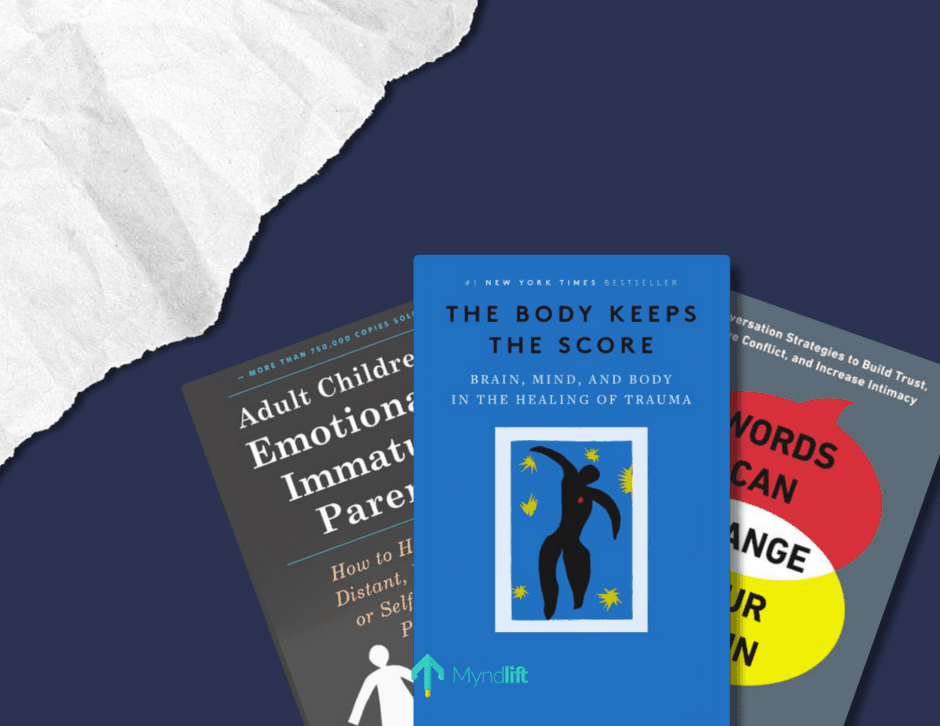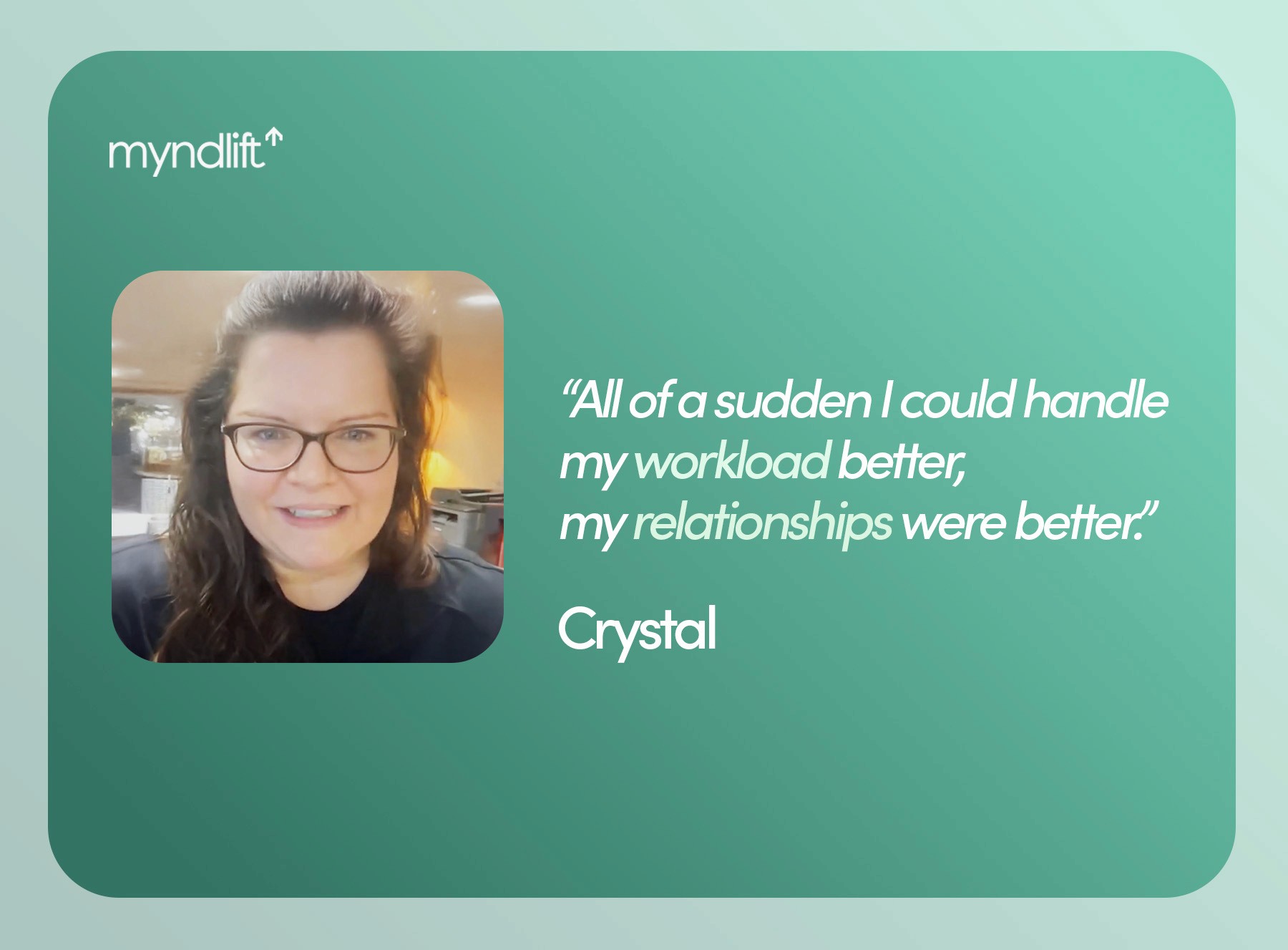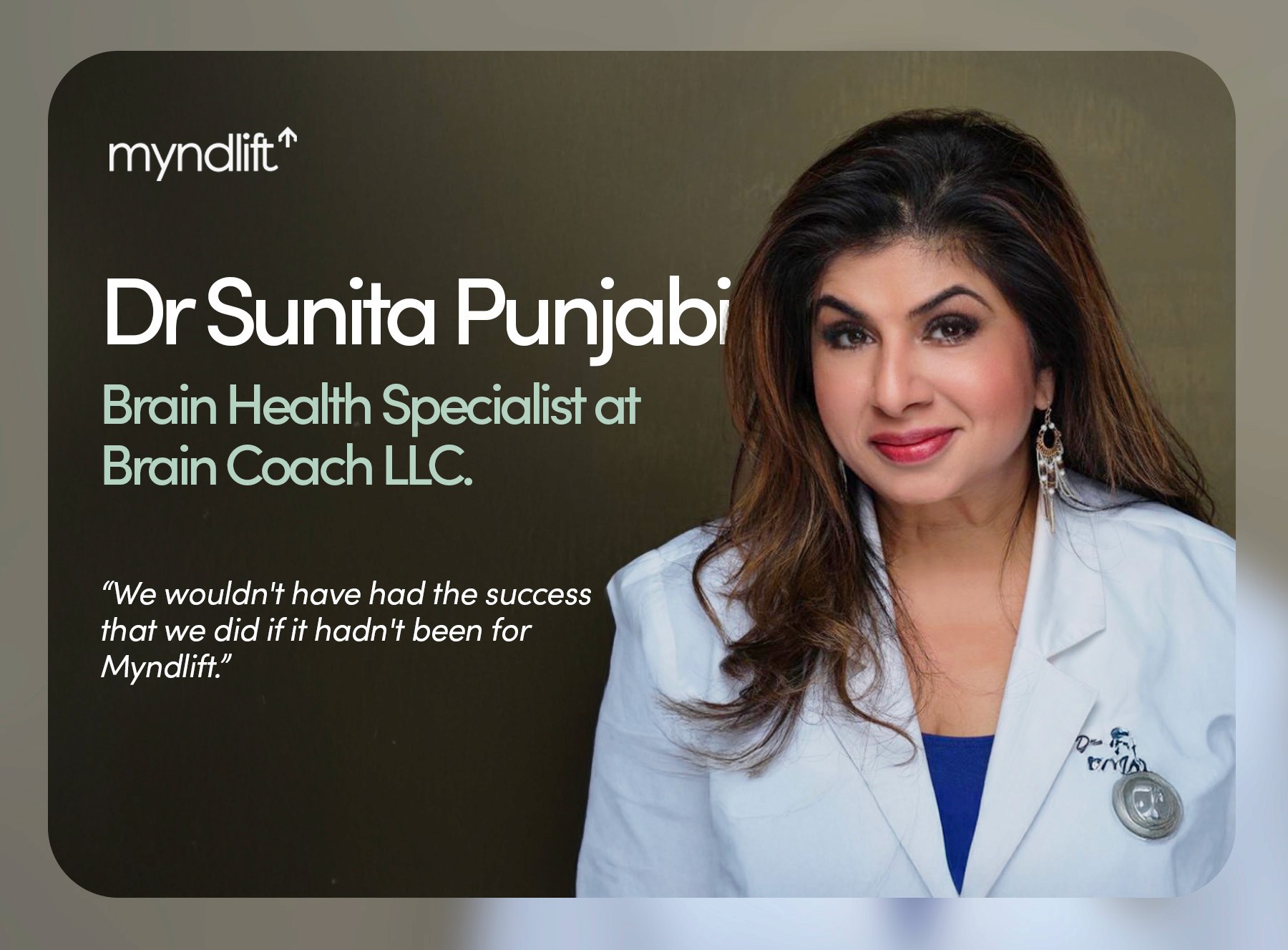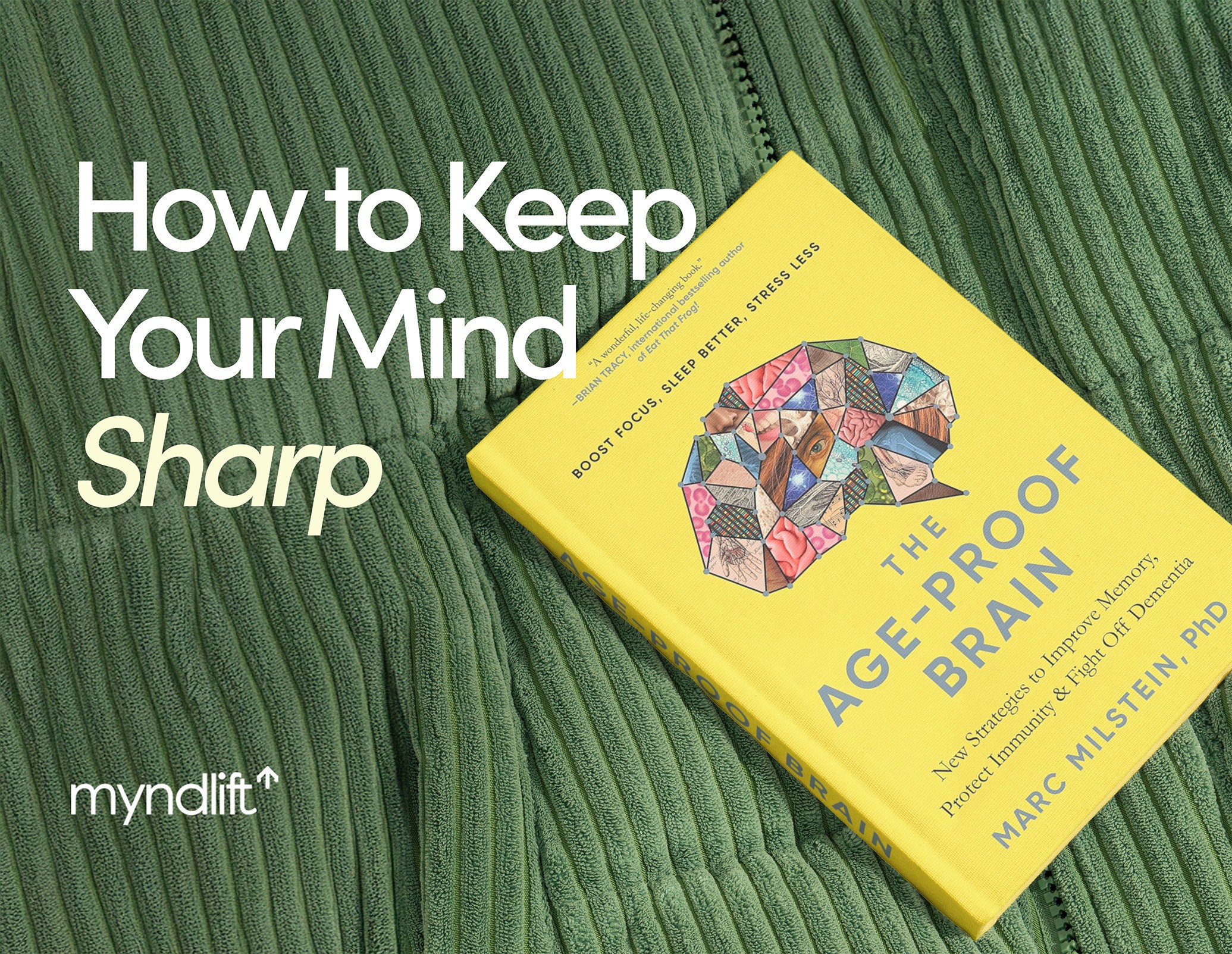Every year in the US, a staggering 18.6 million self-help books hit the shelves.
And many of them offer valuable advice and guidance; they can make you feel supported and less alone in your struggles. But with so many choices, finding the gems that genuinely resonate with you and bring positive change can be daunting.
To help you kickstart your healing journey this year, in this article, we'll break down the most valuable lessons we learned from the top mental health books we read:
The Body Keeps the Score by Bessel van der Kolk
Adult Children of Emotionally Immature Parents by Lindsay C. Gibson
The Myth of Normal by Gabor and Daniel Maté
Why Has Nobody Told Me This Before? by Dr. Julie Smith
Before we dive in, it's important to note that even though the insights and actionable lessons in these books can be helpful, they are not a replacement for the personalized care and expertise that a mental health professional provides.
Great Mental Health Books for 2024
1. The Body Keeps the Score by Bessel van der Kolk
The Body Keeps the Score is thought to be one of the best mental health books of all time.
This book, written by psychiatrist and author Bessel van der Kolk, explores the complex relationship between mental health and trauma. It combines educational insights with practical strategies and builds hope in overcoming trauma.
Here is the most valuable insight we gained from The Body Keeps the Score:
Trauma Can Cause Physical Symptoms
Bessel van der Kolk explores how trauma can trigger intense emotional reactions, known as chronic emotional reactivity.
These reactions seem disproportional to the trigger event, and may appear to others (and yourself) like you’re overreacting. For example, instead of feeling slight annoyance at a car that changes lanes without signaling in front of you, you may experience intense fear, as if your life is at risk. According to Bessel van der Kolk, chronic emotional reactivity can cause physical symptoms such as back pain, muscle spasms, and migraines.
As a remedy, Van der Kolk recommends mindfulness practices like meditation and yoga. He highlights how becoming more observant and tolerant of your physical reactions can help to soothe physical ailments resulting from trauma.
Within this book, you’ll also find important lessons on:
How the brain and body are connected
When we come up against a threat, our amygdala (the part of our brain used to process emotions like fear and anxiety), sends distress signals which trigger the rest of our stress response. Our stress response is a whole-body reaction, which results in faster, shallower breathing, quicker heart rate, sweating, pupil dilation, and suppressed digestion and logical thinking.
Trauma disrupts the stress response system
After trauma, the amygdala can become overly sensitive to threats, causing it to trigger the stress response when we’re not at risk. The frontal lobe, a part of your brain responsible for self-control and emotional expression, plays a role in regulating the amygdala’s response and could help reduce unnecessary stress responses.
Van der Kolk explains how trauma interferes with the brain-body connection by disrupting the balance between your frontal lobe and the amygdala. As a result, the amygdala may trigger the stress response system, even when we’re not in danger.
Ways trauma distracts us from the present moment
Trauma keeps us stuck in the past and distracted from the present in 3 key ways:
1) When our stress response is triggered, we release the stress hormones cortisol and adrenaline. Van der Kolk describes how trauma can cause continual activation of our stress hormones, which means we respond to our present as if we’re always in danger. For example, a child who experienced a traumatic event may continue to feel unsafe and threatened as an adult, even when they’re safe, as cortisol and adrenaline are still coursing through their body as if they’re under threat.
2) Some people experience flashbacks and intrusive thoughts relating to the traumatic event. Flashbacks involve reexperiencing the traumatic event through mental images, such as watching a car accident play out again in your mind. Intrusive thoughts, on the other hand, are unwanted negative thoughts about the event that are difficult to suppress. For example, “It’s my fault” or “I could have stopped it.” Both flashbacks and intrusive thoughts pull them from the present and into the past.
3) If the emotions surrounding the traumatic events are too uncomfortable to manage, we may go into a dissociated state, meaning we disconnect from our thoughts, feelings, and body sensations as a way of coping.

Overcoming trauma using neurofeedback
Van der Kolk introduces neurofeedback, a powerful brain training technology that promotes neuroplasticity—a process whereby the brain forms and reorganizes neuronal connections in response to the environment—and helps to regulate your brain, as a way to improve your mental health after trauma.
For a full breakdown of the book and its important lessons, check out our article, 5 Lessons We Learned From The Body Keeps The Score.
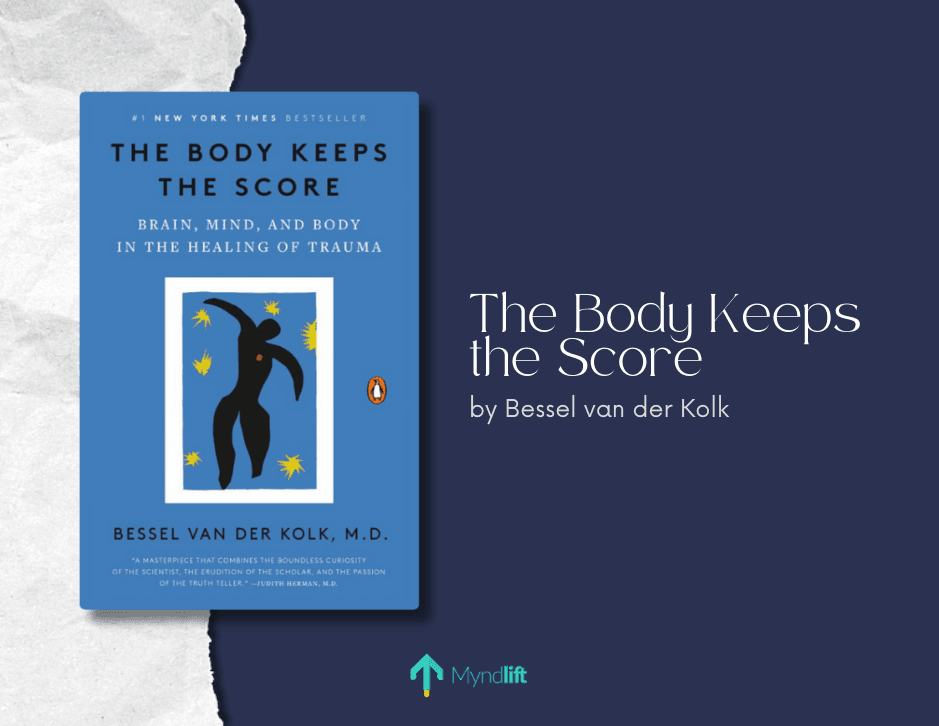
2. Adult Children of Emotionally Immature Parents by Lindsay C. Gibson
Adult Children of Emotionally Immature Parents by Lindsay C. Gibson, a licensed psychologist and author, explores what it’s like to have emotionally immature parents as an adult and offers insights on how to form healthy, boundaried relationships and heal from past hurts.
The main insight we gained from this book is:
You Can Handle Your Emotionally Immature Parents
Gibson offers reassurance that it is possible to manage your relationships with your emotionally immature parents by remaining calm and grounded during interactions with them, as this will help you to feel more centered and communicate more effectively.
You can do so using two key methods:
1) Detached observation: In order to feel more centered during an interaction with your parent, try pretending you're conducting an anthropological field study and ask yourself what words you would use to describe your parents' facial expressions, what is their body language communicating, or does their voice sound calm or tense.
2) Maturuty awareness approach: In order to communicate more effectively, try setting goals for your interactions and communicating your feelings and thoughts in a calm, clear way. For example, your clear goal could be something like, "I'll tell my parents I'm not coming home for Christmas," or "I'll ask my father to speak nicely to my children." This is achievable because you can ask others to listen, even though, due to their emotional immaturity, you can't make them understand.
Adult Children of Emotionally Immature Parents will also teach you:
How to see your parents objectively as the first step of healing: Gibson emphasizes that parents are only human; they make mistakes. Healing means side-stepping blame and focusing on curiosity and understanding. However, the first step to seeing them objectively is understanding what type of emotionally immature parent they are. This can help you gain clarity over why they are the way they are.
The role you play in your relationships: People with emotionally immature parents either become internalizers, meaning they try to solve their problems on their own, or externalizers, which involves using external solutions (such as alcohol, drugs, or relationships) to cope. Recognizing whether you’re an internalizer or an externalizer and what this means can help you live a healthier, more fulfilling life.
You can find a full review of this book in our article, 3 Lessons We Learned From Adult Children of Emotionally Immature Parents.
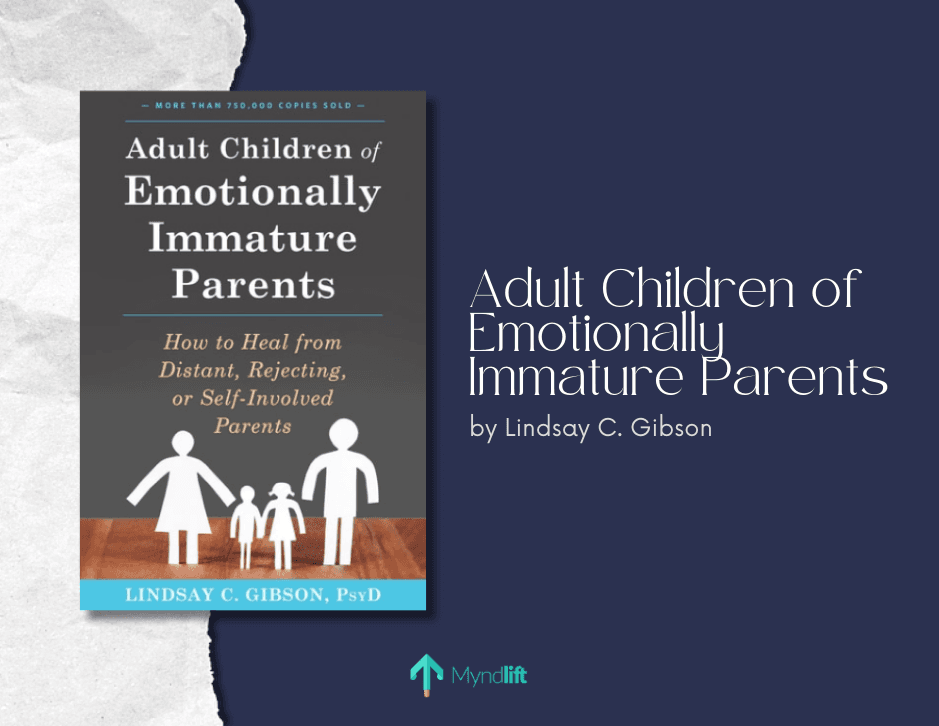
3. The Myth of Normal by Gabor and Daniel Maté
The Myth of Normal challenges us to question our environment and ask ourselves, “What happens when we start to see trauma as an expected consequence of our global culture and social structures, rather than being dealt a bad hand?”
It’s written by a father-and-son duo—Gabor Maté, a retired medical doctor who is well-known for his work within trauma, mental health, and addiction, and Daniel Maté, a composer, lyricist, and playwright who has personal experiences relating to trauma and mental health.
Here is the main insight we gained from this book:
Trauma Influences Your Life Long After the Event
Experiencing trauma not only affects you during the event, but if you don’t process the emotions surrounding this experience, it influences:
Your ability to respond to threats later in life
Your perception of the world
According to The Myth of Normal, trauma inhibits your response flexibility, a term used to describe your ability to respond well in stressful situations. As Gabor Maté states, this limited response flexibility triggers your stress hormones more frequently and increases your risk of developing chronic diseases, such as diabetes and cardiovascular disease.
The Myth of Normal also highlights how traumatized individuals develop one of two mindsets, continual fear and suspicion or naive optimism, after the event. The book demonstrates how both can distort your perception of the world and, as a result, influence how you think and act within it.
You’ll also learn valuable insights on how:
Trauma can be stored in our bodies: The Matés explain how trauma affects our thoughts, behavior, and social habits, as it becomes stored in our body after the traumatic event. This stored trauma then manifests as physical and emotional symptoms like headaches, muscle tension, back pain, stomach aches, anxiety, depression, chronic fear, and nightmares.
Trauma can separate us from our bodies: Gabor and Daniel Maté suggest that trauma disconnects our brain and body by impairing our ability to recognize and respond to our emotions and physical sensations. According to the authors, this continual struggle to meet our basic needs makes us more prone to developing chronic physical illnesses, and our immune system works less effectively.
Societal trauma awareness can help us heal: The Myth of Normal stresses the importance of systematic changes to help people heal from trauma. Gabor and Daniel Maté call for trauma awareness in:
Medicine: Gabor Maté highlights that none of the medical colleagues he interviewed for the book had learned about the mind-body connection. Gabor Maté noticed a general lack of knowledge of and resistance to learning about trauma within the medical profession.
Law: Law students do not learn about trauma mechanisms as part of their studies, despite the prevalence of trauma and mental health struggles among prison inmates. The Matés recommend reforming the legal system to be more trauma-informed, replacing punitive measures for rehabilitation strategies.
Education: Trauma impacts how children learn, yet teachers aren’t taught about trauma before qualifying. The Matés highlight the importance of teachers knowing the signs and signals of trauma responses in children and viewing their challenging behaviors as a consequence of trauma, not as intentional misbehavior.
We offer a more detailed breakdown of this book in our article, 6 Lessons We Learned From The Myth of Normal.
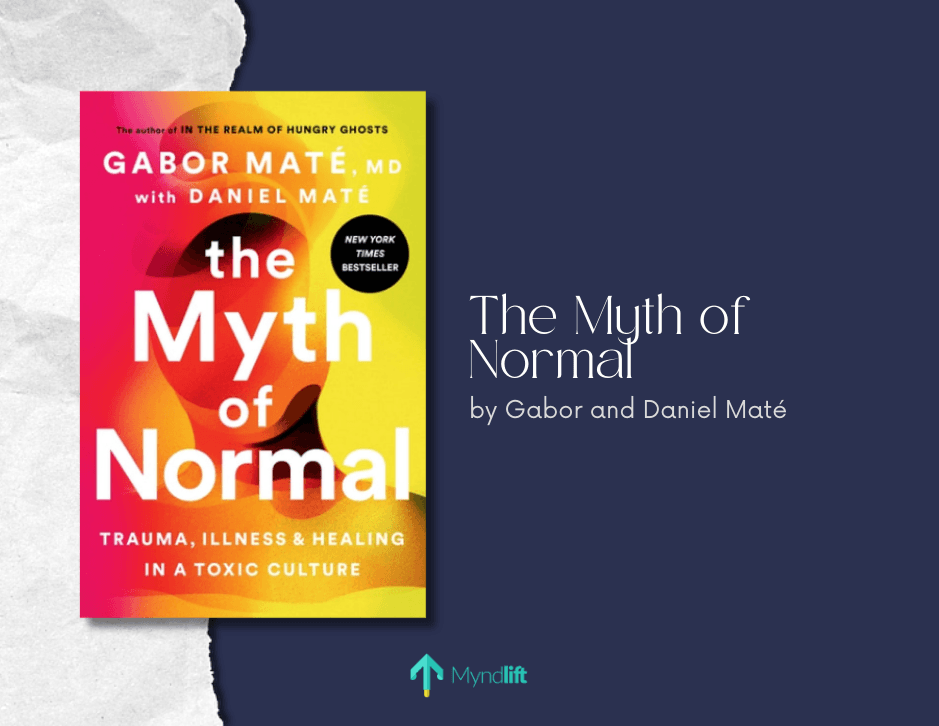
4. Why Has Nobody Told Me This Before? by Dr. Julie Smith
Why Has Nobody Told Me This Before? by bestselling author and world-renowned clinical psychologist Dr. Julie Smith, translates effective therapy tools into self-help strategies that we can use to recognize our cognitive biases, become resilient to shame, and build our confidence, making it easier to navigate life’s stresses.
Here’s the most interesting lesson we learned from the book:
Practicing Shame Resilience Can Help You Tackle Self-Criticism
Smith explores the relationship between criticism and shame, arguing that you can overcome shame by not letting criticism negatively influence your life. Instead, by building your resilience to shame, you can start to use criticism as a tool for self-improvement.
One key technique Smith delves into in her book is practicing self-compassion, which involves listening to your criticism and taking on board some aspects and reframing others. She coaches you through how to do this without—and here’s the key part—damaging your self-esteem.
She also suggests that identifying your trigger events, people, and places that cause shame and sharing your shame with people you trust can help you build resilience to the uncomfortable feeling of shame.
Check out the other two main insights from this book in our article, 3 Key Lessons We Learned From “Why Has Nobody Told Me This Before.”
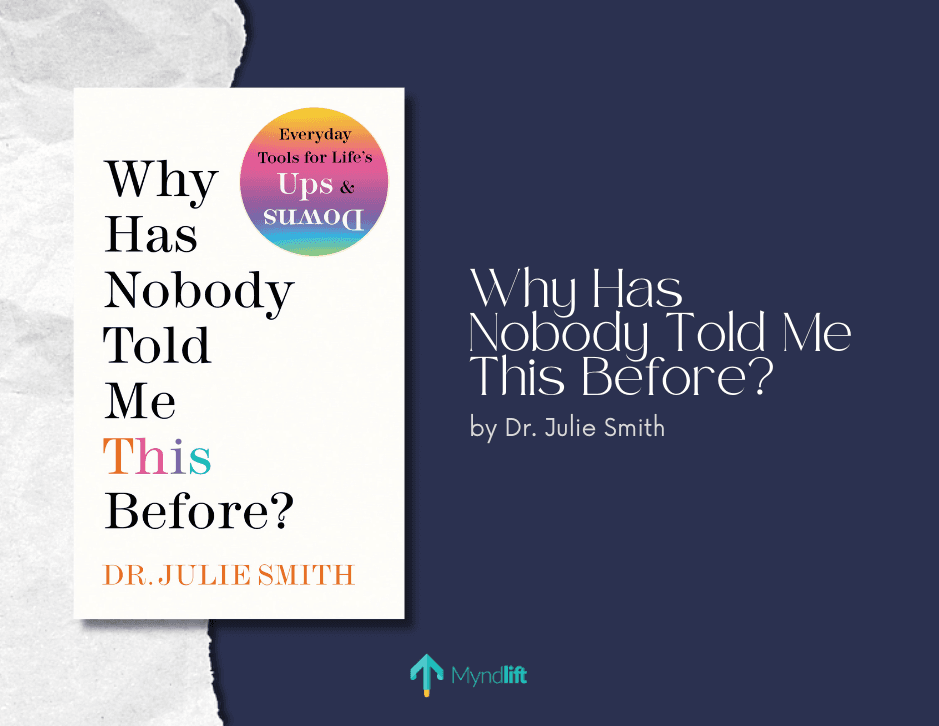
Summary
As you explore these insightful mental health books, you’ll begin a powerful journey of growth, self-awareness, and healing. Each book holds valuable yet unique lessons that will support your mental health, guide you on a path of self-discovery, and help you build stronger relationships.
But remember, these self-help books are not a substitute for professional therapeutic intervention. So, if you’re still struggling after reading these books, or feel you need more guidance, it’s important to seek expert guidance.
Myndlift provides a personalized expert-guided brain training program that can help you elevate your wellbeing by improving your sleep quality, focus, calm, and self-control over mood. Take this 10-second quiz to check if you’re eligible to kick-start your journey for better brain health.
About the author:
Emma Loker
Emma is a practicing trainee Child and Adolescent Psychotherapist studying at the University of Cambridge and a psychology writer with years of experience. She achieved a 1st Class Honors Degree in Psychology from Aston University in Birmingham.
About the checker:
Kaija Sander, Ph.D.
Kaija Sander is a cognitive neuroscientist and scientific consultant for Myndlift. She holds a BSc in Biomedical Science with a specialization in Neuroscience and Mental Health from Imperial College London and a PhD in Neuroscience from McGill University. Her doctoral research focused on brain connectivity relating to second language learning success. She is passionate about the broader applications of science to have a positive impact on people’s lives.
References
Bergsma, A. (2007). Do self-help books help? Journal of Happiness Studies, 9(3), 341–360. https://doi.org/10.1007/s10902-006-9041-2
Chojnacki, R. (2023, August 16). Self Help Book Sales are Rising Fast in the US, The NPD Group Says. The NPD Group. https://www.npd.com/news/press-releases/2020/self-help-book-sales-are-rising-fast-in-the-us-the-npd-group-says/
Fuller-Thomson E, Bejan R, Hunter JT, Grundland T, Brennenstuhl S. The link between childhood sexual abuse and myocardial infarction in a population-based study. Child Abuse Negl. 2012 Sep;36(9):656-65. doi: 10.1016/j.chiabu.2012.06.001. Epub 2012 Sep 1. PMID: 22943837.
Harvard Health Publishing. (2020, July 6). Understanding the stress response. https://www.health.harvard.edu/staying-healthy/understanding-the-stress-response#:~:text=After%20the%20amygdala%20sends%20a,as%20adrenaline)%20into%20the%20bloodstream.
Merabet N, Lucassen PJ, Crielaard L, Stronks K, Quax R, Sloot PMA, la Fleur SE, Nicolaou M. How exposure to chronic stress contributes to the development of type 2 diabetes: A complexity science approach. Front Neuroendocrinol. 2022 Apr;65:100972. doi: 10.1016/j.yfrne.2021.100972. Epub 2021 Dec 17. PMID: 34929260.
Mock SE, Arai SM. Childhood trauma and chronic illness in adulthood: mental health and socioeconomic status as explanatory factors and buffers. Front Psychol. 2011 Jan 31;1:246. doi: 10.3389/fpsyg.2010.00246. PMID: 21833299; PMCID: PMC3153850.
NPD. (2020, January 13). Self Help Book Sales are Rising Fast in the US, The NPD Group Says. https://www.npd.com/news/press-releases/2020/self-help-book-sales-are-rising-fast-in-the-us-the-npd-group-says/
Seiler, A., Fagundes, C.P., Christian, L.M. (2020). The Impact of Everyday Stressors on the Immune System and Health. In: Choukèr, A. (eds) Stress Challenges and Immunity in Space. Springer, Cham. https://doi.org/10.1007/978-3-030-16996-1_6
Whitehead, J. C., Neeman, R., & Doniger, G. M. (2022). Preliminary Real-World Evidence Supporting the Efficacy of a Remote Neurofeedback System in Improving Mental Health: Retrospective Single-Group Pretest-Posttest Study. JMIR formative research, 6(7), e35636. https://doi.org/10.2196/35636


